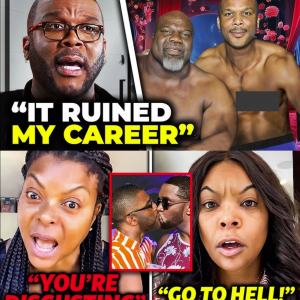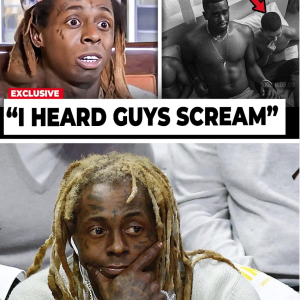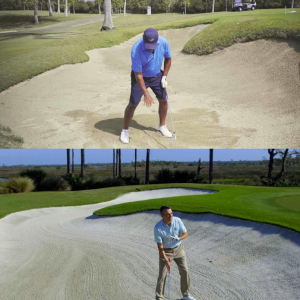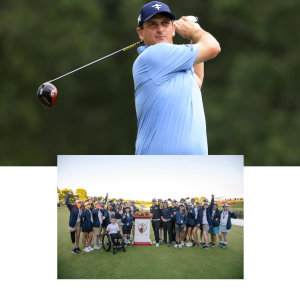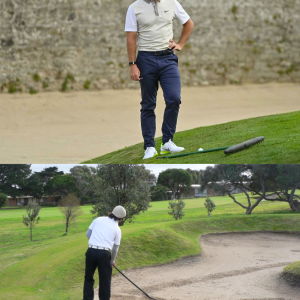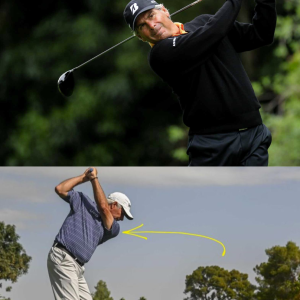Don’t play with fire, Jack Nicklaus told Nick Faldo a few years back on national TV.
Aim away from trouble, the 16-time major winner argued.
The conversation started with Billy Horschel on the tee on the 186-yard, par-3 16th at Muirfield Village. His pin that day, during the third round of the 2022 Memorial, was cut 12 feet in on the green’s left side (and 39 feet in from the front), and a few yards left of the hole was a lake. In question, essentially, was whether Horschel, who’s right-handed, should flirt with the water to try to get his ball in close. Or play away from the drink.
Jack?
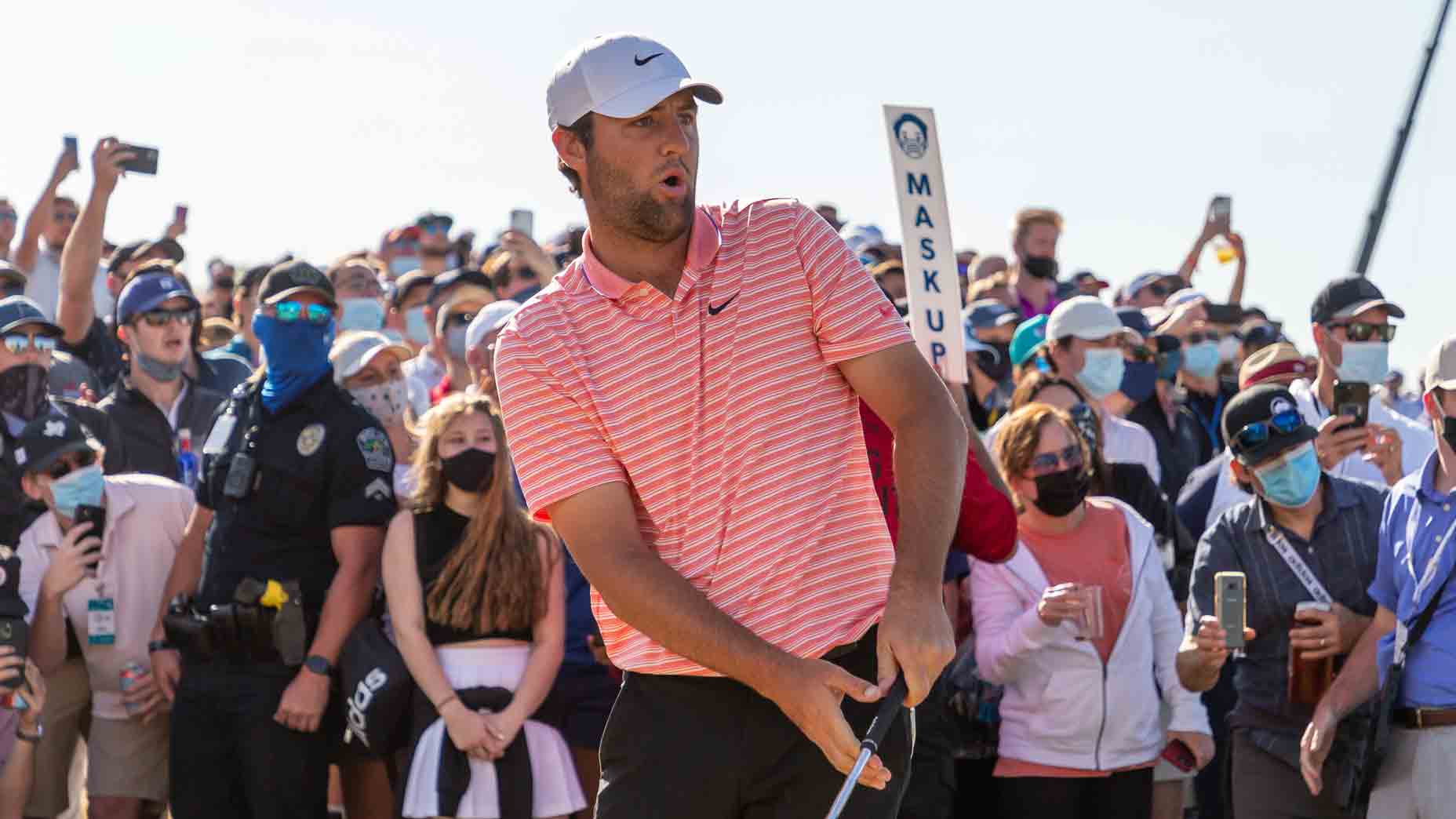
“I would be playing right at the middle of the green,” said Nicklaus, the tournament’s host and the course’s founder. “I would let the ball turn a little bit left. But I don’t think you should be playing left to right in there.”
“Why wouldn’t you fade it in there, Jack?” asked Faldo, then an analyst with CBS. “I would think that’s the hold-off. one-yard fade.”
“I don’t ever aim the ball into trouble,” Nicklaus said. “Period.”
“Don’t ever aim ball at the trouble,” Faldo said.
“Don’t ever aim the ball at trouble,” Nicklaus said. “Don’t ever aim the ball at out of bounds. Don’t ever aim the ball at a lake. You always aim away from it. And if you have to play back towards it, make sure that you can’t hook it enough to get there or make sure you can’t fade it enough to get to it.”
But what about aiming at trouble — to improve shot-shaping?
The thought came up during a lesson session recently between my friend Josh, who’d been on the brink of quitting golf due to a variety of swing ailments, and Kelan McDonagh, the director of instruction at Metedeconk National Golf Club in Jackson Township, N.J. — and the guide whom I’d enlisted to try to help rescue Josh. At one point, as part of a drill, McDonagh had Josh aiming purposefully left, and that triggered this back and forth between the coach and the curious golf reporter (my thoughts are in italics):
“Maybe this is because golf is a weird game — [but] why is it easier to say, all right, I’m going to purposefully hook this ball, I’m going to purposefully go right with this ball — instead of, I’m going to purposefully go straight with this ball? Why is that? Is that just because it’s a wacky game and we should all be playing another sport?”
“Yeah,” McDonagh said, “that’s probably just how the human brain works.”
“Right, right.”
“Like, we stand on a hole where there’s out of bounds down the right,” McDonagh continued, “chances are if you tell yourself you’re going to hit it there, you probably are going to hit it there. Whereas when you stand on a hole where there’s no trouble left or right, you probably go down the middle.”
Via an exercise he learned when he was younger, McDonagh then told me how he refined his game.
He targeted trouble, then worked shots back to safety.
“But it’s funny,” McDonagh said, “growing up in Ireland, I was on the Irish team for a number of years and we were coached by Neil Manchip, who looks after Shane Lowry, and Neil was unbelievable and still is to this to this day obviously because he’s got Shane to be one of the best players in the world at the mental side of things. So we’d like stand down different holes at tournaments or in practice or at the away weekends or whatever, and he would be like, aim and hit it at the out of bounds — but don’t hit it out of bounds. So you had to aim there and swing at it, but you weren’t allowed to hit it there.
“So your brain would figure out a way to get the ball back in play other than, ‘There’s out of bounds down the left, don’t hit it there.’ He’s like, go ahead and aim your body, but don’t hit it there. So he got us to move the ball left to right, right to left, high, low. Those days, we weren’t allowed to play with nothing less than like 5-iron, 3-iron, 3-wood, driver, and we have to go play nine holes and see how we scored. Just different ways to trick your brain if you’re trying to get — because at the end of the day, it doesn’t matter how it gets there, you’re just trying to get it in the hole.
“It’s not all about hitting it dead straight. I don’t teach people to hit it dead straight. I want them to get some sort of repeatable, consistent ball flight. Now the rare occasions that it ends up being a little bit straight, but for me, it’s always been a fade; for my brother, it’s a draw. It’s different for everybody. It’s just kind of owning what, to be honest, your body kind of dictates and you take it from there.”

Of course, to start McDonagh’s drill, one should bring a few extra golf balls.
We’ll end things here by going back to aiming at trouble in real time — and a thought toward doing it. A GOLF.com piece, written shortly after the Nicklaus-Faldo discussion, said this:
One of the men who Faldo cited in his discussion was Ben Hogan who, famously, would work the ball away from trouble. So, if there was out of bounds left and safety right of it, Hogan would aim straight at it and hit a fade back toward safety. In his mind, this would help him commit to the shot — after all, when you need to hit the ball to the right, you’re probably going to hit the ball to the right. And even if you aim for a fade and hit a giant slice, you’re still safe.
But while pros generally default to the conventional advice, most end up adopting a hybrid model. They work the ball toward trouble, but they’ll often choose to do the opposite for two reasons.
The first is perhaps the most common: It depends on what the wind is doing. If, using the example of Muirfield’s 16th hole above, the wind is blowing severely from right-to-left toward the water, hitting a draw would have the effect of riding the wind and sailing uncontrollably into the lake. Pros, in this case, will often choose to hit a cut back into it, so their ball battles the wind and ends up flying relatively straight.
The other reason pros may disregard the textbook on this is what Faldo was alluding to: When the shot that convention would suggest, quite simply, doesn’t suit their eye. The best recent example came on the 6th hole at the [2022] PGA Championship where Rory McIlroy, among others, aimed out of bounds and hit a cut into the fairway of the dogleg-left par-5.
“I’m a little more comfortable hitting the driver left-to-right at the minute,” Rory said of the 6th hole. “I feel like my body works a little better; I can be more aggressive with my body. The body doesn’t stop and arms go. Some of those right-to-left winds today off the tee it was nice because I could just aim the driver up the middle of the fairway, hit like a nice hold against the wind.”
This approach is becoming increasingly common on Tour nowadays, and you’ll often see it when players have one preferred shot shape that they try to hit whenever possible. Hogan, for instance, was a legendary fader of the golf ball, so it makes sense that he would feel comfortable aiming at trouble and hitting his signature fade and moving his ball off of it.
As for what you should use? Only you can answer that. But think about what your preferred shot shape is, think about what your misses are — do your little fades tend to turn into slices or pulls? — and factor in the wind. Once you’ve done that, it’s time to stop thinking, and start swinging. Whatever path you choose, the key is to swing with confidence. After all, even the ‘right’ shot is the wrong one if you don’t believe in it.
